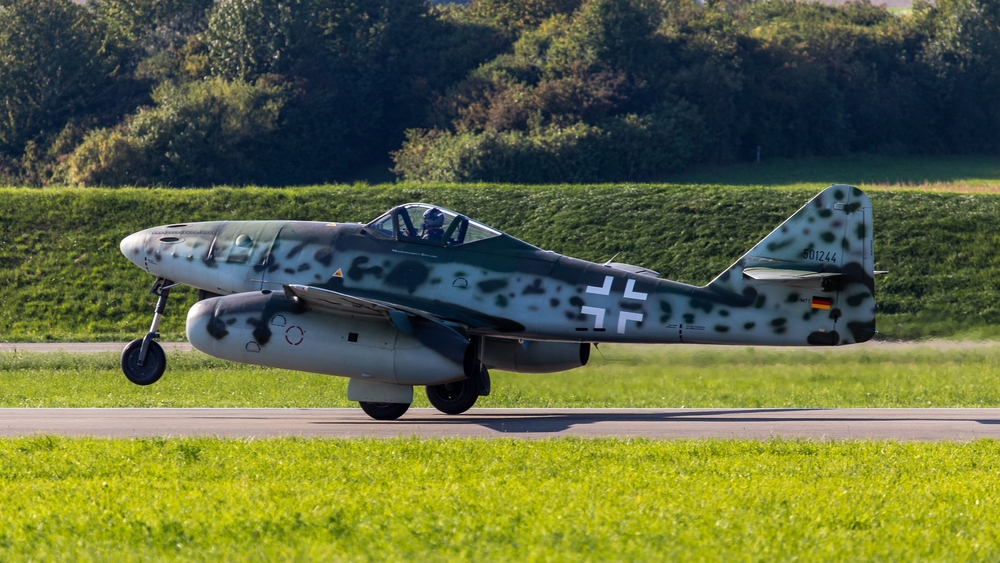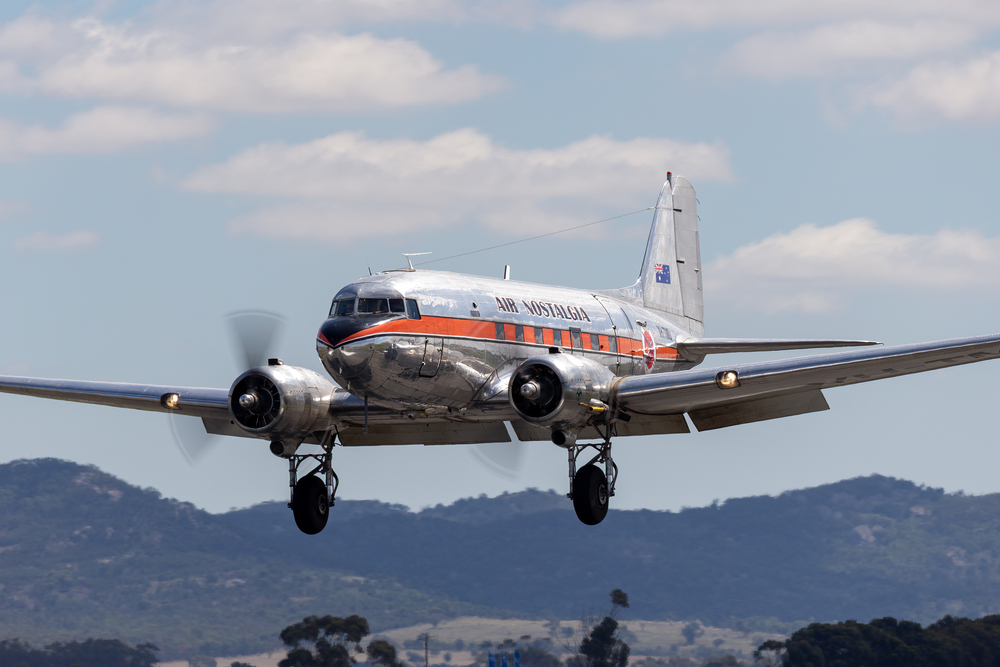Aviation has a captivating history, filled with iconic airplanes that pushed the limits of technology and redefined what it means to soar through the skies. From groundbreaking military aircraft that turned the tide of world conflicts to commercial jets that brought international travel within reach, these planes played pivotal roles in shaping our world. Each of these legendary aircraft, whether known for its speed, endurance, or sheer innovation, contributed something extraordinary to the field, setting new standards in engineering, performance, and design.
Contents
Boeing B-17 Flying Fortress

The Boeing B-17 Flying Fortress was a game-changer in World War II due to its heavy bombing capability and durable design. Known for its long-range capabilities and resilience, it completed high-altitude bombing missions over Europe, even when damaged. With a reputation for returning safely with extensive battle damage, the B-17 strengthened Allied forces’ strategic bombing efforts. Its four-engine power allowed it to carry large bomb payloads, which led to significant developments in air warfare strategy. The B-17 also contributed to technological advancements in defensive aircraft design with innovations like the nose-mounted machine gun turret, inspiring future bomber designs. It remains a symbol of American resilience and military engineering.
Lockheed SR-71 Blackbird

The Lockheed SR-71 Blackbird was an unmatched spy plane during the Cold War, capable of flying at speeds exceeding Mach 3 and altitudes over 85,000 feet. Designed to evade radar detection, the SR-71 set speed and altitude records that remain impressive today. Its advanced stealth technology and use of titanium materials were groundbreaking, influencing modern stealth aircraft. The SR-71’s high-speed reconnaissance missions provided crucial intelligence, often outpacing enemy missiles. It served as a critical component in US intelligence operations, gathering data from otherwise inaccessible areas, and significantly pushed the boundaries of aviation technology with its complex engines and aerodynamic design.
Avro Lancaster

The Avro Lancaster was a British heavy bomber known for its versatility and payload capacity, instrumental in the Allied bombing campaigns of World War II. It could carry up to 22,000 pounds of bombs, allowing it to conduct strategic bombing raids, including the infamous Dambusters Raid on German dams. The Lancaster’s four Merlin engines gave it the range and speed needed to penetrate deep into enemy territory, contributing to the success of nighttime bombing missions. Its design prioritized payload over defensive armament, making it a vital asset in weakening enemy infrastructure. The Lancaster’s contributions to the war efforts left an enduring legacy in aviation, showcasing engineering prowess and innovative bombing strategies.
Mitsubishi A6M Zero

The Mitsubishi A6M Zero was Japan’s premier fighter aircraft during World War II, feared for its agility and range. Lightly armored and highly maneuverable, the Zero outperformed most Allied aircraft in dogfights, especially in the early stages of the war. Its design pushed the boundaries of aircraft engineering with weight-saving materials and a streamlined shape, setting a high standard for aerial combat. Although later models of Allied fighters eventually surpassed it, the A6M Zero remained a symbol of Japanese air power. Its influence on aerial combat strategies and tactics left a lasting impact, representing one of the most iconic fighter planes of the war.
Spirit of St. Louis

The Spirit of St. Louis, piloted by Charles Lindbergh, achieved the first nonstop solo transatlantic flight in 1927, bridging New York and Paris. Lindbergh’s journey in this custom-built monoplane marked a milestone in aviation history, proving that long-distance air travel was possible and safe. The flight showcased innovations in fuel efficiency and endurance, as the aircraft was designed to carry maximum fuel for extended range. Its success sparked public interest in aviation, leading to increased investment in commercial aviation and the development of air transport networks. The Spirit of St. Louis remains a symbol of human ingenuity and the pioneering spirit of flight.
Boeing 747

The Boeing 747 revolutionized commercial aviation as the world’s first wide-body, long-haul aircraft. Nicknamed the “Queen of the Skies,” it could carry hundreds of passengers, making air travel more accessible and affordable. Its distinctive humpbacked design allowed for increased cargo capacity and set new standards in passenger comfort. The 747’s engineering advancements, including its high-bypass turbofan engines and extended range, pushed forward innovations in aircraft technology. It enabled airlines to connect distant cities, boosting global tourism and commerce, and its impact on aviation remains profound as it became the symbol of international air travel.
Messerschmitt Me 262

The Messerschmitt Me 262 was the world’s first operational jet-powered fighter, deployed by Nazi Germany during World War II. With speeds exceeding 540 mph, it outpaced any Allied piston-driven aircraft, posing a significant threat in the air. The Me 262 introduced innovations in jet propulsion and aerodynamics, influencing post-war jet fighter design. Although deployed too late to alter the war’s outcome, it demonstrated the potential of jet technology in military aviation. Its development spurred the global arms race in jet technology, leading to advancements in both military and civilian aviation.
Douglas DC-3

The Douglas DC-3 was a pioneering aircraft in commercial aviation, introducing reliable long-distance travel for passengers. Known for its durability and range, it became the backbone of airlines worldwide in the 1930s and 1940s, dramatically reducing travel time. The DC-3’s success set the standard for aircraft design with its twin-engine configuration, which provided stability and fuel efficiency. During World War II, it was adapted as the C-47 Skytrain for military transport, proving its versatility and resilience. The DC-3’s influence on commercial and military aviation is unparalleled, with some models still in operation today.
North American P-51 Mustang

The North American P-51 Mustang was a standout fighter in World War II, praised for its speed, range, and maneuverability. Equipped with a powerful Rolls-Royce Merlin engine, it provided escort cover for bombers deep into enemy territory, helping to secure Allied air dominance. Its long range allowed it to reach targets previously out of reach, changing the dynamics of air warfare. The Mustang’s superior performance made it a favorite among pilots and a feared adversary. Its legacy extends beyond the war, as it became an iconic symbol of American air power and remains celebrated in aviation history.
F-117 Nighthawk

The F-117 Nighthawk was the world’s first operational stealth aircraft, developed by the United States and used in the Gulf War. Its unique shape and radar-absorbing materials allowed it to evade detection, marking a revolution in military aviation. The F-117 demonstrated the potential of stealth technology, influencing the design of future military aircraft. It was primarily used in precision bombing missions, showcasing the effectiveness of stealth in minimizing collateral damage. This pioneering aircraft highlighted the importance of stealth in modern warfare, fundamentally altering air combat strategies and inspiring future advancements.
Supermarine Spitfire

The Supermarine Spitfire was a British single-seat fighter that became famous during the Battle of Britain. Its elliptical wings and powerful Merlin engine gave it speed and maneuverability, making it a match for German aircraft. The Spitfire’s role in defending Britain from Nazi forces boosted Allied morale and highlighted the importance of air superiority in warfare. Its performance and iconic design inspired future fighter aircraft development. The Spitfire remains a symbol of resilience and innovation in British aviation, with a lasting legacy as one of the most beloved fighters in history.
This article originally appeared on MyCarMakesNoise.
More from MyCarMakesNoise
15 Pro Tips Auto Detailers Use to Keep Cars Looking New

Keeping your car in top condition doesn’t have to be a mystery. Auto detailers have a few tricks up their sleeves that can make a big difference in maintaining your vehicle. Read More.
15 Notorious Car Features Behind Major Recalls

Car manufacturers strive to design vehicles that are safe, reliable, and innovative. However, sometimes features intended to enhance the driving experience can backfire, leading to widespread recalls. Read More.
20 Challenges You’ll Face When Transitioning to Electric Motorcycles

Switching to an electric motorcycle can be exciting, but it’s not without its challenges. From the logistics of charging to adjusting to new technologies, there are several factors to consider before making the leap. Read More.














